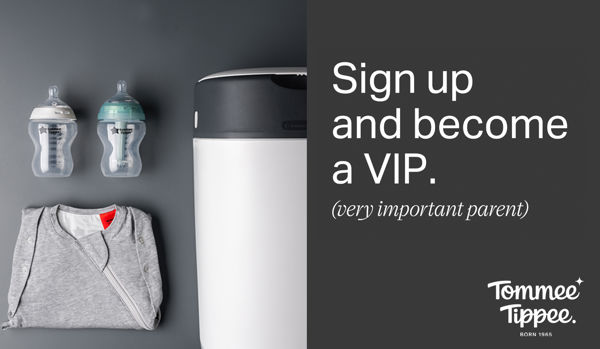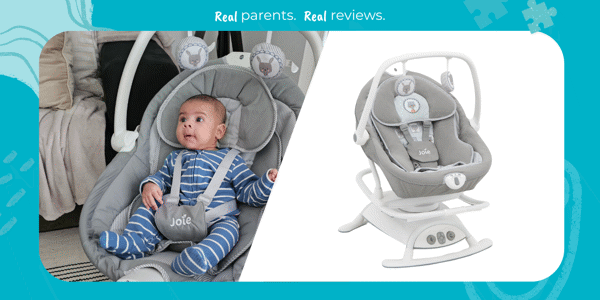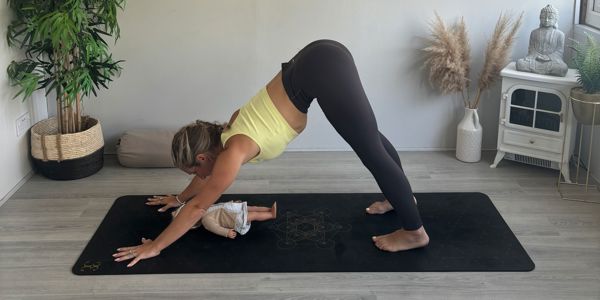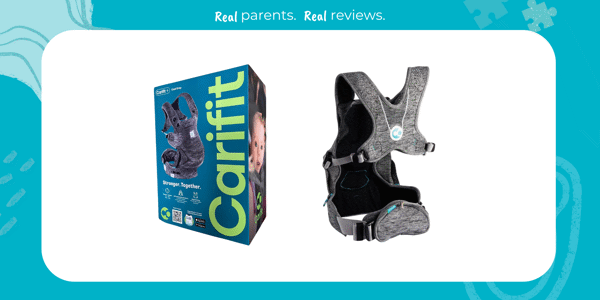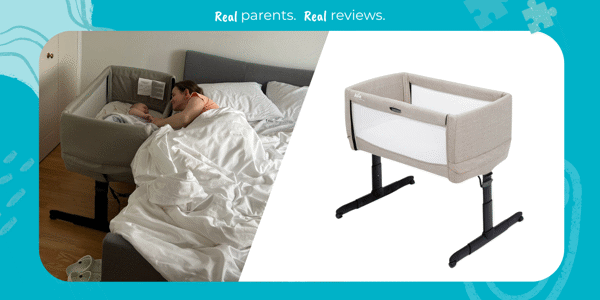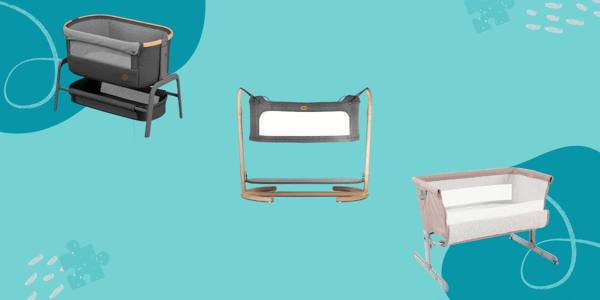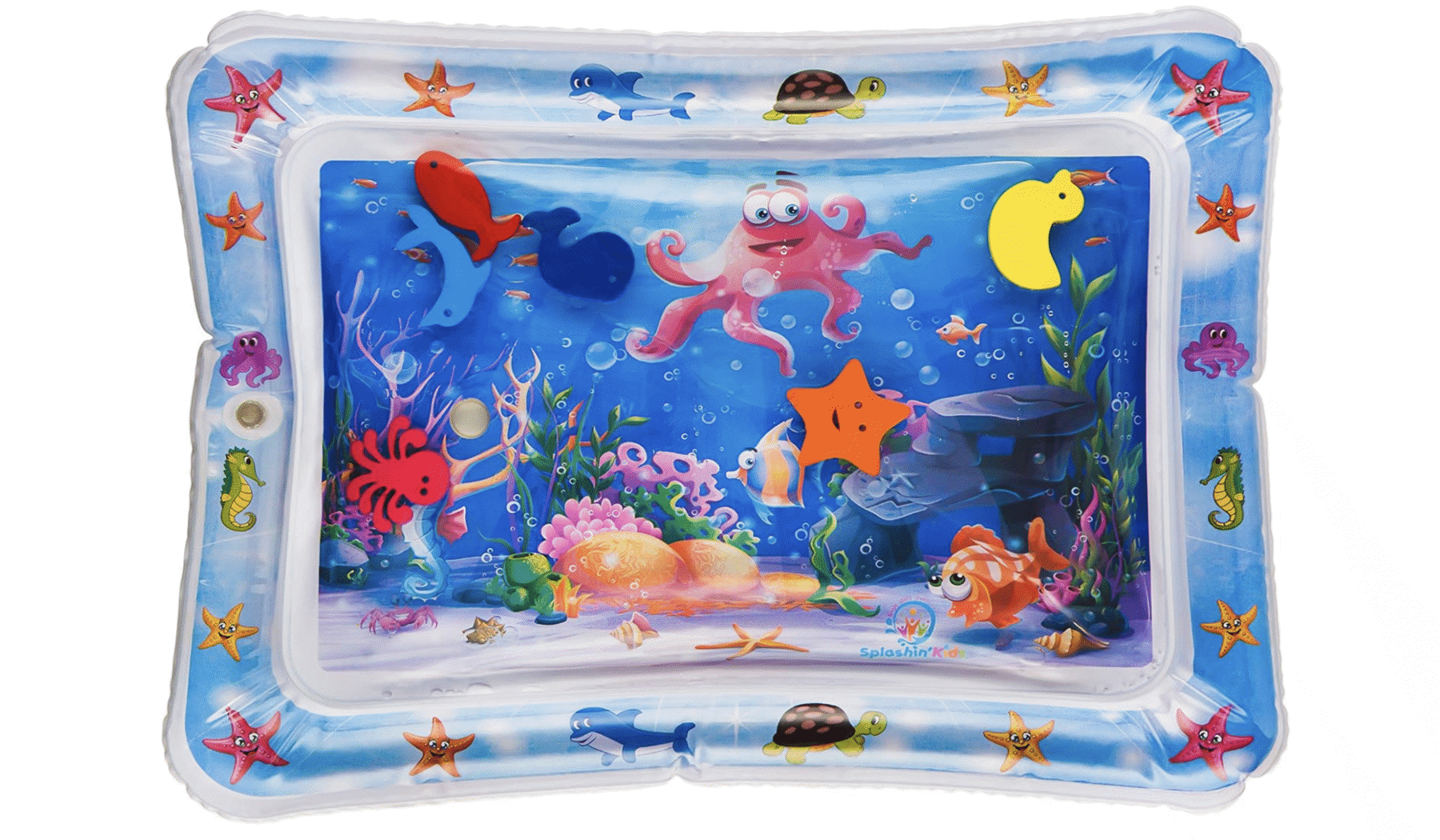2-Month-Old
As your little one grows their facial expressions will also become more animated and varied. You will start to see smiles, coos, and even giggles! Your baby's ability to engage with you through facial expressions is an amazing way to establish emotional connections and strengthen your growing bond.
By the time your baby reaches the third month of their life, you will notice significant changes in their physical appearance and growth.They will continue to gain weight and grow in length. On average, babies tend to gain about 1-1.5 pounds (0.5-0.7 kg) per month and grow about 0.8-1 inch (2-2.5cm) in length this month. The average weight and length for a 3-month old is around 6.25kg (13 lbs 12.4oz) and 61cm (24in) for boys, or 5.75kg (12lbs 10.8oz) and 60cm (23.6in) for girls.
This is based on the 50th centile (the average) of the WHO Growth Charts in your Personal Child Health Record ('red book'). This is where your midwife, health visitor or GP will plot your baby's growth at each monthly visit. However, it's important to remember that every baby is unique, and growth rates can vary. Don’t worry if your little one grows a little more or less than this during the third month.
One of the most noticeable changes to your baby’s physical appearance in the third month is the improvement in your baby's head control. By now they can hold their head up for short periods of time when supported in a sitting position or on their tummies. This milestone is an important step towards developing strong neck muscles and preparing for more advanced motor skills.
As well as facial expressions changing the way you see your little one’s face, their hair and skin might undergo changes as well. Some babies experience a decrease in hair loss and have new hair growing in at around the third month. Others may have a sudden increase in hair growth, while some might still have the sparse hair they were born with at this point. Similarly, their skin may become smoother, and any newborn rashes, baby acne or dryness that appeared earlier may start to fade.
Remember to keep their skin moisturised and protect them from excessive sun exposure, as it’s still very sensitive.
During the third month of your baby's life you'll get to see lots of exciting progress in their cognitive and intellectual development. At this stage their brain is rapidly growing, forming new connections everyday, and laying the foundation for future learning and understanding of the big world around them. They’re becoming more alert and attentive, and might be showing a growing interest in their surroundings.
By the third month your baby's vision has significantly improved. They can focus on objects and people at varying distances and are getting much better at tracking moving objects. They are also becoming more interested in colours and patterns, so introducing toys with contrasting colours or black and white patterns can capture their attention and stimulate their visual development.
Your baby's hearing skills have developed significantly since they were a newborn. They can now turn their head or eyes toward the direction of a sound and show curiosity when they hear new or unfamiliar noises. Your little one can also now differentiate between different pitches and melodies in the sounds that they hear. They may respond differently to high-pitched and low-pitched sounds, showing a preference for certain musical notes or tunes.
They’ll also start to show recognition of familiar voices around this point and you might spot them turning their head or showing some signs of excitement when they hear your voice or that of someone else they know well. Try singing some different songs to your little one or playing different genres of music to get a sense of what they enjoy listening to!
Your little one is increasingly aware of their hands and can hold objects for short periods. They are also becoming more responsive to different textures and may enjoy exploring objects with their fingers or mouthing them. Providing your little one with age-appropriate textured toys or soft fabrics can support their tactile development. Here are some great sensory toys to try.
Your little one is also beginning to understand the concept of object permanence. This means they are starting to realise that objects they interact with continue to exist even when they are out of sight. You might notice them searching for a toy that you hide or showing surprise when an object suddenly disappears! Now is a great time to invest in a play gym- here are our top picks!
While your baby is not yet speaking, they are actively observing and learning the sounds and patterns of language. They may start making more cooing and babbling sounds, experimenting with different tones and pitches. Responding to their vocalisations and engaging in simple conversations helps to promote this language development. Try repeating the noises that they make back to them and throw in an engaging facial expression as you do it. They might get really excited and grin or squeal back at you!
Aiding in your little one’s ability to recognise the voices and faces of familiar people is their increasing memory function. Repeating familiar activities, playing songs regularly, and carrying out the same routines each day can help reinforce their memory skills and let them know what’s coming next.
Top tip: Use a variety of sounds, such as rattles or musical toys, during play time with your little one to enhance auditory awareness and encourage sound localisation.
Now the newborn stage is long behind your little one, they’ll start to be much more social when meeting new people as well as when interacting with familiar faces. During this stage, they’re becoming more interactive and responsive, making meaningful connections with you and the world around them and this will be amazing to watch.
You'll notice their face light up with joy when they see familiar people and hear familiar voices, especially yours! This newfound ability to smile in response to people and things is an important social milestone, as it signifies their growing recognition of social cues and their ability to engage in positive interactions.
Another important development that aids in these responses is the improvement of your little one’’s eye contact skills. They will begin to focus their gaze more deliberately on faces, tracking movements and expressions. Encourage eye contact during playtime and interactions as it fosters a sense of connection and emotional engagement.
As well as smiling when they see or hear you, around this time your little one will also be developing the ability to respond to your voice and actions in other ways throughout this month. They may turn their head toward you when they hear your voice or display excitement by kicking their legs and waving their arms around. Get ready to melt at how cute this is to see for the first time!
To support this social responsiveness engage in conversations with your little one and respond to their vocalisations and excitement. This back-and-forth interaction encourages the development of language and communication skills as well as fostering a sense of emotional connection.
In addition to displaying excitement your baby's range of other emotional expressions is also expanding. They may start to display a wider range of emotions including joy and even frustration. Pay attention to your baby's cues and respond appropriately to their emotional needs during this month. They’re still young so comforting and soothing your baby when they are upset helps them develop a sense of emotional security and trust.
While play at this stage is usually solitary, your little one may start to show an interest in toys and objects. They may reach out to grasp objects and bring them to their mouth for exploration, and as your baby grows, they will gradually develop the ability to engage in interactive play.
Top tip: Try to engage in regular face-to-face interactions and mimic your baby's expressions to promote social and emotional connection.
Fine motor development involves the coordination of small muscles, particularly in the hands and fingers. For more information on what fine motor skills are, head back to month 1 here.
Your baby's hand control is becoming more refined than it has been in their first couple of months. They will begin to intentionally grasp objects and when they do grab onto an object, depending how heavy it is, they might also be able to shake it around for a few seconds without letting go of it. Encourage their exploration by providing them with safe toys and objects to hold onto that they can comfortably hold the weight of.
As your baby gains better control over their hands they will also start to bring their hands together and bring objects closer to their face. You may notice them attempting to swat at objects hanging above them or trying to touch their own hands. This newfound hand-eye coordination is an essential skill that will continue to develop over time. Get ready to see your little one start excitedly clapping for the first time and realising the noise that they can make!
They might also soon start reaching out to grab objects that catch their attention now they know they’re strong enough to do so. They may try to grasp toys, rattles, or even your fingers. This reaching and grasping motion helps develop their hand muscles and enhances their ability to hold onto objects.
This increased curiosity will see them spending more time inspecting toys, feeling different textures, and bringing objects to their mouth when they do get hold of them. And with better hand control, your little one will begin to demonstrate improved hand-to-mouth coordination.
Be prepared for them to start putting everything straight in their mouth and make sure to keep any objects that are a choking hazard out of reach! As this month progresses, you’ll likely notice them begin to bring their hands to their mouth intentionally, helping them explore objects orally and laying the foundation for self-feeding skills in the future.
Top tip: Introduce simple games, like peek-a-boo or pat-a-cake, to encourage social interaction and develop fine motor skills.
During the third month of your baby's life you will notice significant advancements in their gross motor skills. These skills involve the larger muscles of the body and enable your little one to perform physical movements such as rolling, reaching, and even some early attempts at sitting. It's an exciting time as your baby continues to explore their world and develop newfound physical abilities.
Throughout this month you’ll get to see your little one really start to move! Your baby's neck muscles have grown stronger, allowing them to hold their head up for longer periods. They might now be able to lift their head and chest while lying on their tummy during supervised tummy time sessions, or if not, they could well start doing this soon. This milestone is crucial as it helps develop their neck and upper body strength, laying the foundation for future rolling over, standing up, and eventually walking!
Around this time your baby will also start to wave their arms and kick their legs a lot more with purpose. These movements are no longer just random flailing but are intentional attempts to explore and interact with their environment, or ways to show their excitement.
This is exciting to watch but might mark an end to those peaceful nappy changes and stress-free experiences of getting them dressed everyday. They know their own strength now and soon enough they won’t hesitate to kick in protest!
All of this kicking will have your little one’s leg muscles growing stronger everyday! As they gain strength, you may notice them pushing against your hands or a firm surface when in an upright position and it might look like they’re trying to stand up already. While supported by your hands, your baby might even start to put weight on their legs, giving them a brief taste of what it feels like to be on their feet. But, don’t worry, you’ve got a while left yet until they’re really on the move!
Some babies also begin to show signs of rolling over from their tummy to their back or vice versa. While not all babies achieve this milestone at the same time, it is not uncommon for babies to start rolling over with a little assistance or by accident around this time. Always ensure your baby is on a safe surface with plenty of room around them during playtime to prevent any accidental fall.
You’ll be surprised how much distance they can cover with a few rolls! With regard to sleep, it is a general safe sleep rule to keep your baby sleeping on their back. Until they are able to confidently roll themselves back again after rolling onto their front, parents should aim to turn them over again if they’ve flipped over in the night.
Towards the end of the third month, and as they get stronger, you might notice your baby showing signs of wanting to sit up with support. They might attempt to prop themselves up by leaning forward and using their hands for balance. However, it is key to remember that their back and neck muscles are not yet fully developed, so always provide close supervision and support during these early attempts to sit up.
To support your baby's gross motor development during the third month, you can incorporate the following activities:
If you’re breastfeeding your little one, you’ve likely established a good breastfeeding routine by this point and your baby's needs and feeding patterns may have started to change from the newborn stage. By now they may feed less frequently and their feeds may become shorter as they get the hang of breastfeeding! When approaching 3-month-old, most babies drinks about 720ml to 1200ml a day spread over five to eight feeds.
Some babies may start to go longer between feedings at some point around month three, or drop a feed, while others may still prefer to feed more frequently if they’re going through a growth spurt. Remember that every baby is unique and their individual needs may vary. Pay attention to your baby's hunger cues and let them guide your feeding schedule.
At this stage your little one’s awareness of the world around them is growing rapidly and there’s a lot for them to take in. They may become more easily distracted during breastfeeding sessions, especially if there are interesting sights or sounds nearby. Finding a quiet and calm environment can help minimise distractions and allow your baby to focus on nursing. Putting a black and white sensory muslin over your shoulder could keep their attention on you and prevent any distracted head pulling away from your breast. We’ve all experienced that whip of the head, nipple pull if the baby hears a sudden noise!
Growth spurts are common around this time so don’t be concerned if your little one is showing signs around this time. During these periods they may be hungrier than usual and want to nurse more frequently. Growth spurts can be demanding, both physically and emotionally, but they are temporary. Try to be patient and follow your baby's cues for increased feeding. Remember that these growth spurts help stimulate your milk supply to meet your baby's growing needs over time.
Breast milk production works on a supply-and-demand basis. To ensure a healthy milk supply at this point you should still be feeding your little one whenever they show signs of hunger. Breastfeeding isn’t always easy and especially during growth spurts it can feel like you spend all of your time with your little one latched onto you. But it does get easier, and as your baby grows, they will need your services less and less often! It's normal to worry about your milk supply but trust in your body's ability to meet your baby's needs. If you have any concerns, speak to your GP or health visitor for support.
Month three is generally seen as the first month where babies might go through a period known as a nursing strike, where they refuse to breastfeed. This can be distressing for both you and your little one. Nursing strikes can be caused by various factors, such as illness, teething, or even a change in routine. If your baby refuses to nurse, ensure they're comfortable and offer your breast when they're calm and relaxed. Continue offering skin-to-skin contact and try different nursing positions to encourage breastfeeding. If the nursing strike persists, seek guidance from your GP or health visitor.
If formula feeding, your baby should be drinking around 150-200ml per kilo of their body weight per day. This roughly equates to around 700-1000 (24-35oz), depending on their weight, across around 6 feedings per day (roughly every 3-4 hours). Take your feeding cues from your baby. If they’re hungry, by all means give them more milk. If they’re pushing the bottle away and refusing, try again later.
The NHS can recommend a rough idea of how much they should be drinking, however each baby is unique and their appetite can change day on day as well as throughout the day due to a whole number of factors. Just trust that you’re doing great and offer at every opportunity when they show signs of hunger.
By the third month most babies have established a more predictable sleep-wake cycle. At this stage your baby will typically sleep for around 14 to 17 hours per day, including both nighttime sleep and daytime naps.
Throughout this month you might notice that your little one can sleep for longer stretches at night, great news! It’s common for babies to sleep for about 10 to 12 hours during the night at this age. Some might sleep for a long stretch without waking up but many will still wake up once or twice for night feeding, changing or other needs.
Soon your baby will also start to develop sleep associations, which are the things and actions they associate with falling asleep. Encourage a calm and relaxing bedtime routine to help signal to your baby that it's time for sleep and help to build that association, whether this is with a white noise machine or ensuring you stick to the same routine each night. Create a sleep-friendly environment by keeping the room dark, using white noise or a gentle lullaby, and maintaining a comfortable temperature.
You can also encourage other positive sleep associations to comfort your little one, such as a favourite blanket or a gentle rocking motion, as long as they can be replicated without causing dependency. Avoid relying on sleep props that are not sustainable in the long run like nursing or being rocked to sleep every time. Though this is a very effective and lovely way to settle and soothe your little one, try and switch it up if you can, enabling you to always be comfy or have a break - your back will thank you later!
Encouraging self-soothing skills at this stage can help your baby learn to fall asleep independently but this isn’t always the case. Your baby is still very new and may not quite be out of their fourth trimester yet, wanting to be close to mummy at all times. It is also natural for babies to go through what are called ‘sleep regressions’ when they go through a big developmental leap, so these self-soothing techniques are typically better left until they are a bit older when your commitment and efforts won't be undone. Let your baby guide you as to whether they’re ready to be put into a sleep routine and be less dependent on someone with them while they fall asleep.
While they might be sleeping a bit better throughout the night, naps still play a crucial role in your baby's development and overall sleep routine. They will likely take three to four naps during the day, lasting around 30 minutes to two hours each. Help them to differentiate between daytime naps and nighttime sleep by keeping the room bright and engaging during the day.
One other thing to recognise around this stage is the ongoing importance of safe sleep guidelines. By the third month, your baby may start to roll over or wiggle around more, so it's important to maintain a safe and protective sleep environment, without any potential hazards. Place your baby on their back to sleep, on a firm and flat mattress, without any pillows, blankets, bumpers, or stuffed animals that could pose a suffocation risk. Keep the room at a comfortable temperature and dress your baby in appropriate sleepwear for the temperature and season to keep them safe and sound.
Top tip: Try to focus on maintaining a consistent daily routine to promote healthy sleep patterns.
At 3 months, or 12 weeks, your little one will have another round of immunisations. It might feel like they’re having a lot of immunisation but it’s crucial that your little one has them to be protected against a number of viruses and diseases as well as prevent others catching them too.
Your little one’s 12 week immunisations will include:
During the appointment your GP will be happy to provide more information about the vaccines, the illnesses they prevent, and any side effects to look out for. Don’t feel like you can’t ask questions and learn more about the immunisations being given to your little one. Watching your 3-month-old being vaccinated can be scary and it can often help to know a bit more about the process and why it’s being done.
To help relieve discomfort following these injections, offer your little one some milk to comfort them. Your doctor will also probably advise you to provide paracetamol every 4-6 hours for 24 hours following the MenB jab to control any subsequent fever.
By the third month you may notice improvements in your overall physical well-being. Around this point your body has likely made remarkable progress in healing from birth and the physical discomfort and pain you experienced in the initial weeks are likely to have subsided for the most part.
Physical recovery plays a crucial role in the postnatal journey. What’s more is that you’re likely at the tail end or beyond the fourth trimester now, which should give you a bit more body autonomy and mental/physical freedom to spend longer periods of time away from your little one while they’re with another caregiver.
For some mums, especially those experiencing perinatal mental health struggles, this time away can be invaluable to rediscover themselves, their identity since becoming a mother and focus on their own mental and physical wellbeing after dedicating the first 12 weeks solely to their baby. We all do this, so we get it!
It's important to remember that healing is an ongoing process, and certain symptoms may still be present at this stage. If you have concerns over your physical recovery, or experience persistent pain and discomfort, low moods or anxiety, speak to your GP or health visitor as soon as possible.
During the third month, it can be a good time to gradually reintroduce pelvic floor exercises into your routine. Strengthening these muscles is really important for improving bladder control, supporting the pelvic organs, and promoting overall recovery after your birth. Kegel exercises are a common and effective way to target the pelvic floor muscles. To perform Kegels, contract the muscles as if you're trying to stop the flow of urine and hold for a few seconds before releasing. Aim to do these exercises regularly, gradually increasing the duration and intensity as your muscles strengthen.
Diastasis recti, the separation of the abdominal muscles that commonly occurs during pregnancy, may still be a concern during the third month. It's important to be mindful of your abdominal movements and avoid exercises that put excessive strain on the area. If possible, reach out to your health visitor or speak to a physical therapist for guidance on exercises that can help recondition the abdominal muscles safely. These may include gentle core exercises, such as pelvic tilts or modified planks, that promote healing and restore core strength gradually.
Top tip - have you heard of a Mummy MOT? Lots of women’s health specialist physiotherapists offer this service and it helps new mums, whether they went through a vaginal or caesarean birth, to get back to optimum health. It looks at your posture, your pelvic floor, your abdominal muscles and screens for any dysfunction in your bladder, bowel or sexual organs to provide a report and rehabilitation recommendation to get you feeling more yourself again.
If you had a c-section or an episiotomy, looking after your scar area properly is an important aspect of your physical recovery. Your GP or health visitor should have taken a look at your scar during the 6 week check up, so hopefully you already have an idea of how it is healing.
Even at this point, you should try to keep the incision area clean and dry as much as possible to minimise the risk of infection. As you progress through the recovery, gentle scar massage techniques may also aid in improving circulation and reducing scar tissue formation.
The first period after giving birth, also known as the postnatal period, can vary for each woman. For some it may arrive as early as six weeks after delivery, while for others it might take several months to make an appearance. The timeline can be influenced by factors such as whether or not you’re breastfeeding as well as hormonal changes.
When your first period finally arrives, it's normal to experience a mix of emotions. Some people feel relieved while others may feel a bit apprehensive. Your body has been through a lot, so it's natural to wonder how this milestone will impact you physically and emotionally. During the first postnatal period, you may notice some changes compared to your periods before pregnancy.
It's not uncommon for your period to be heavier initially, as the lining of your uterus has built up during the pregnancy. It’s also important to note that your first few periods after childbirth will likely be irregular. This is generally temporary and caused by your body and hormones adjusting to its pre-pregnancy state. If irregular periods persist beyond a few cycles or are causing you any concern, it's a good idea to speak to your GP.
By the third month you may be eager to resume your pre-pregnancy exercise routine, even if only for the positive impact that exercising has on your mental health. Depending on how you were considered to be recovering at your six week check up, your doctor might have given you the green light to get back into exercising in some capacity.
Even with the backing of a medical professional, it's important to approach exercise gradually and with caution. Begin with low-impact activities such as walking or postnatal yoga and gradually increase the intensity and duration over time. Always listen to your body and stop if you experience pain or excessive fatigue.
Remember, the physical recovery after child birth is a unique journey for everyone. It's key to be patient with yourself and not compare your progress to others, or the rate at which you’re returning to your usual way of doing things. Your body has accomplished an amazing achievement and it will continue to heal and regain strength in its own time. Prioritise self-care, follow the guidance of your GP or health visitor, and celebrate each milestone along the way!Now that you’re a few months into parenting your little one, you’re likely starting to get into a bit of a routine with them and being able to spot what they need before they even have time to let you know something is wrong!
While you have successfully navigated the early stages of parenthood, it's normal to experience a range of emotions during this time. You may find yourself feeling a mix of happiness, fatigue, anxiety, and even moments of sadness. Remember, your body and mind have been through significant changes so it's perfectly okay to have these ups and downs.
As a new parent, it's far too easy to forget about self-care while focusing on your baby's needs. However, taking care of yourself is crucial for your overall well-being. Find even small pockets of time to engage in activities that bring you joy and help you recharge. Whether it's reading a book, taking a relaxing bath, or enjoying a hobby, remember that you deserve moments of self-care too!
While it’s normal to experience some changes in your mood, it’s important to keep an eye out for the symptoms of maternal mental health issues. For some of the symptoms to look out for, and some more information on different mental health concerns, have a read of the following:
If you're experiencing these symptoms, reaching out for support is essential. In the UK, resources are available to help mothers with postnatal mental health concerns. The first step is to reach out to your GP or health visitor. They can assess your symptoms, provide guidance, and refer you to appropriate mental health services.
In addition to professional help, several organisations and support groups in the UK focus on postpartum mental health. An organisation to consider is PANDAS Foundation, which specialises in supporting families experiencing perinatal mental health issues. They provide a helpline, online community, and resources for both mothers and partners.
Online resources can also be valuable sources of information and support. The NHS website offers comprehensive information on postpartum mental health, including symptoms, causes, and treatment options. Postpartum Support International (PSI) is an international organisation with a UK chapter that provides resources, helplines, and online support for mothers and families affected by perinatal mental health issues.
The information on the Your Baby Club website is not intended to be a substitute for professional medical advice, diagnosis or treatment. Always discuss any health concerns with a qualified healthcare provider and carefully review all guidance that comes with any medications or supplements before taking.

